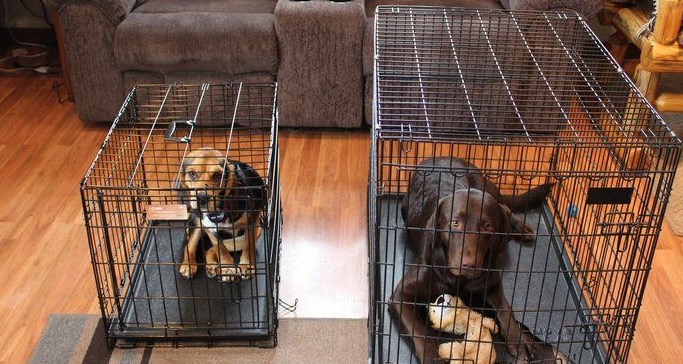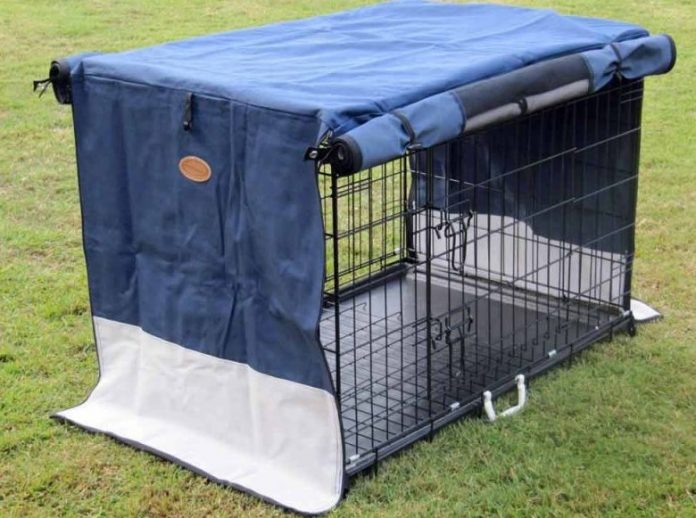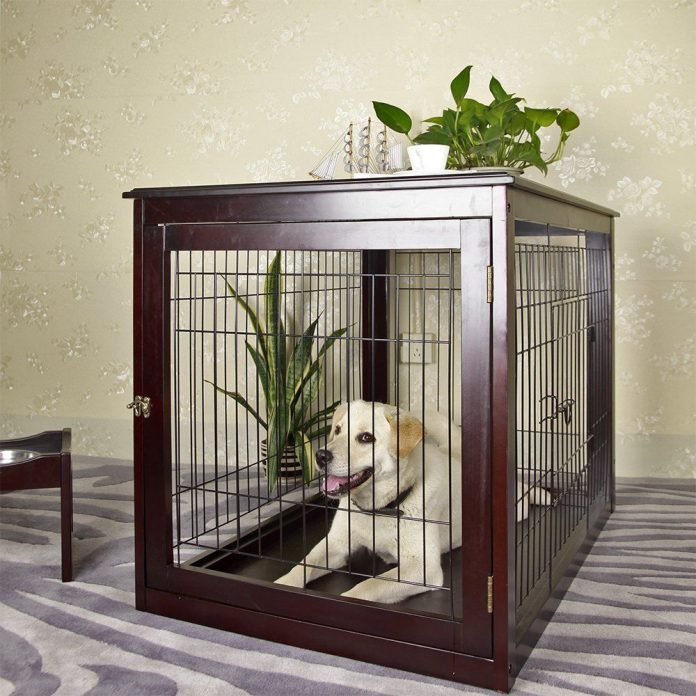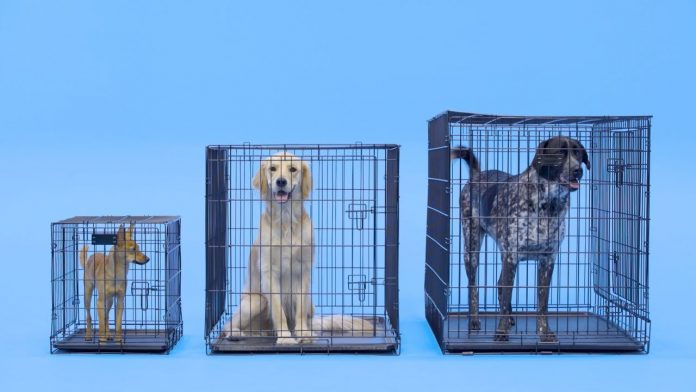You might have recently got a pup, which is why you’re probably thinking about training it and preventing it from chewing on your furniture while you aren’t home. If so, one of the simplest things that you could purchase is a crate. However, are you unsure about the size you need to get?
Fortunately for all new and old dog owners that are unsure of the same thing, the article below will shed some light on the entire topic. So, without further ado, let’s take a closer look at the list of suggestions that will help you opt for an appropriate crate for your new furry friend:
1. Measure You Pup

One of the first things that you’ll have to do is to measure your pup. Now, keep in mind, there are differences between measuring baby and grown-up dogs. If it is already grown, you have to measure its length and height. To do this for an adult canine, you need to get it to stand up properly and measure from the peak of the nose to the bottom of the tail. You should then add 5cm for tinier breeds, while for big ones, you need to add 10cm.
For estimating the height, you need to make your pup sit down. Once it does, measure its straight position from the ground all the way up to the highest point of their ears. Keep in mind, if it keeps its ears upright most of the time, measure to the peak of the ears as well. You have to add 5 to 10cm and that’s it. You should know, these are the minimum cage sizes, hence, if you want to, you can add more centimeters once you measure your pup.
On the other contrary, with pups, you could use the same strategy as above if you’re ready to buy new crates as the dog grows. However, they do grow fast and if you don’t want to waste your budget almost every month, you might want to opt for buying a larger one that’ll be suitable for some time. Additionally, there are some resizable options that you could buy, ones that could be adjusted as your furry friend grows.
2. Think About The Type You Want

If you did some digging online, you probably ended up being completely overwhelmed by the number of options you could choose from. Yes, dog crates come in various shapes and sizes, hence, it’s important for you to think about the types you could get. Some of the choices are transportable because you can collapse them, while others could be utilized for automobile or plane travel. The suitable option for you will depend on how you wish to use it.
There are five types including metal, plastic, soft-sided, heavy-duty metal, and wooden boxes. Heavy duty and metal crates such as the ones featured on billige-hundebur are best for destructive pups that like seeing the environment, they’re in. Plastic cages are suitable for pups that like their privacy and that are smaller in size, mostly because they aren’t as strong as the other options. Soft-sided options are perfect if you travel with your dog, while the last option, wooden is for non-destructive and trained pups.
3. Consider The Cover

Another thing that’s worth mentioning is that you should consider the cover. What does this mean? Well, if you, for instance, opt for purchasing a wire cover, you may want to think about adding a cover over it. Why? It’s quite simple, it’ll probably make your dog more relaxed by creating a den-like area for them. Keep in mind, this will entirely rely on how your dog acts when you place the cover, which is why you might want to consider covering only one-half of it.
4. The Growing Period is Crucial
We already mentioned that there are options available on the market that could be adjusted as your dog grows. However, if you don’t choose to purchase an adjustable cage, you have to be extra careful with the one you purchase, especially since if your dog grows quickly, it’ll become completely uncomfortable in the cage. Hence, consider how big your dog will get, as well as what size they’ll require later on.
5. Don’t Add Too Much Space
Although this may seem completely illogical to many people, purchasing a super large cage for a small or medium breed is never wise. Yes, it does seem nicer if they have more space, but this could easily lead to a lot of accidents, particularly if you’ve just started crate-training your pet. Of course, you should follow the measurement guide we mentioned above, just ensure that you don’t add too many centimeters when you’re done.
6. Adding Accessories Can Make Your Pup More Comfortable
If your pet is still a baby, you could easily help them get adjusted to the new environment by adding accessories to the cage you buy. Besides placing their favorite toys or blanket in the confined space, you could also choose to add a crate mat that’ll make everything so much more convenient for them. By doing this, it’ll be simpler for your pet to acclimate to their new surrounding and actually start liking the box.

7. Start Slow
Last on our list, but equally important, is that you should start slow. This means that you must allow your dog to get adjusted to the box, instead of trying to force it on them. So, when you first bring the crate home, offer your pet some support by allowing them to investigate it alone, place a few treats, and see how they’ll react when the doors are closed.
Conclusion
Although it can seem too daunting and complex to choose a dog crate, it doesn’t have to be. And, if you choose to follow the advice we mentioned in our list above, you’ll be capable of making the entire process simpler and less daunting, but more importantly, you can ensure that you choose the right option.
So, now that you’re aware of all the steps you’ll have to take, you really shouldn’t waste any more of your free time. Instead, you should return to the beginning of our article, and start with the first tip we mentioned – which is measuring your pup’s height and length – and then start browsing through different stores in order to find something suitable.









